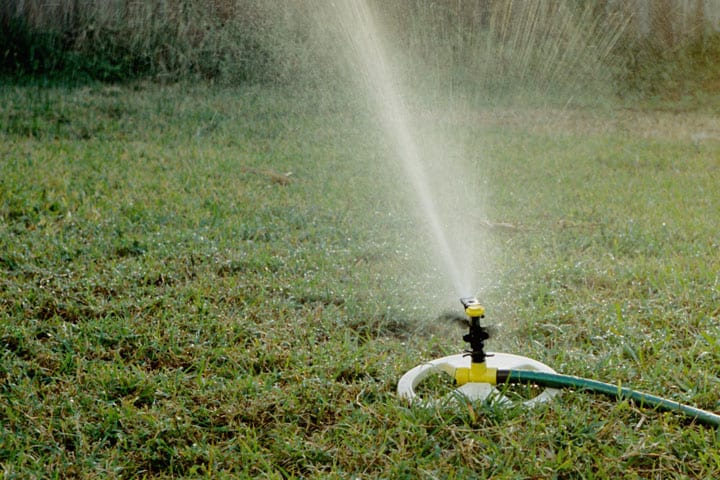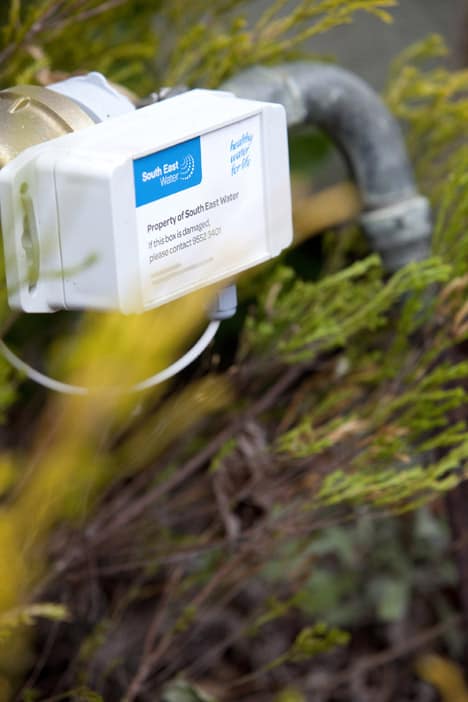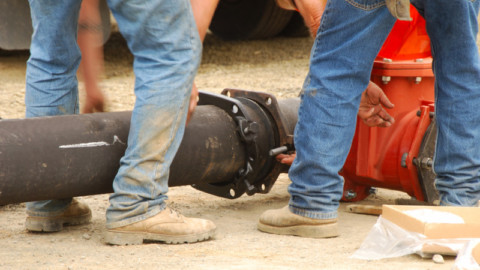Victorian water retailer South East Water has observed strong early indications of consumer, financial and environmental benefits through innovative digital water meter trials in Melbourne’s south east.
South East Water has investigated the next generation of water metering through innovative technological advancements in recent years in an effort to pursue efficiencies and outcomes.
“We saw an opportunity to be more proactive in the identification of leaks for our customers and incorporating innovative and forward-thinking technology into our business is always at the forefront of our minds,” said South East Water Managing Director, Kevin Hutchings.
The advanced technology reads the volume of water that enters a property in 30-minute intervals and wirelessly transmits water consumption data to a central gateway. South East Water then integrates this data into its technology systems. Several trials are now investigating and evaluating differing technologies. One of the technology trials implements a meshed network, whereby the meter transmits data over a radio communications link. The network has been designed for information flow in both directions: meter-to-gateway and gateway-to-meter. The meters transmit information from one another and then to the gateway through increased connectivity, providing greater area coverage and reduced dead spots. Consequently, if a property’s consumption pattern appears abnormal, technicians can direct the meter to conduct more frequent reads in an effort to identify a leak.
“Currently, contractors go out on foot and conduct manual reads of over 673,000 commercial and residential mechanical meters. This enhanced communication link used in the digital water meters not only provides water readings in 30 minute intervals, but also all but eliminates the need for on-site meter readings. The greater frequency of reads generated by this new technology means that we can alert customers to any potential leaks much faster than ever before,” said Mr Hutchings.
Using a SCADA system to control and monitor the network, the technology collects data from the field and populates a statistical portal. The system enables computer algorithms to check for trends in the data, monitor consumption patterns and identify abnormalities.
Unlike electricity smart meters, digital water meters do not require mains power, cannot cut off the supply of water and can be replaced with minimal disruption to households. The digital water meters can detect reverse flow, trigger alerts and monitor trends.
Initial testing of the digital water meters in Belgrave South sought to facilitate a better understanding of how this type of technology might be used across South East Water’s service region in the future.
“Trialling the next generation of water meters will allow us to identify the most efficient way of keeping customers informed about their water use. With over 13,000 kilometres of water pipes, it will also help us to optimise the water network and focus future investment in water infrastructure where it’s needed most,” said Mr Hutchings.
Testing of the digital water meters in Belgrave South identified that 12 per cent of water supplied to properties within the trial area was lost due to water leaks. Once the testing revealed that data collection and analysis could improve leak detection, South East Water continued to explore digital metering options, communication networks and possible customer benefits through the expansion of the trials.
South East Water has now expanded its trials to three additional sites in South Yarra, Seaford and Caulfield. These locations were selected due to their terrain, housing density and access to property meters and other required infrastructure like utility power poles.
To complement the digital water meters’ functionality, some residents involved in the trials will soon have access to an online self-service environment which will display their daily water consumption.
“Customers participating in the trials will soon be able to view their daily water use, for the first time, at South East Water’s prototype online self-service environment. Through the site, customers will be able to explore their daily water use, compare water consumption to other households participating in the trials within their suburb and set water use targets,” said Mr Hutchings.

Minister for Water Peter Walsh and South East Water Managing Director Kevin Hutchings discuss the digital water meter technology
The South East Water digital water meter technology has been identified as an innovative step forward by one of the most significant voices in the industry today. Victorian Minister for Water, Peter Walsh visited one of South East Water’s digital water meter trial properties in Seaford on 5 March 2014. Mr Walsh said the trials have demonstrated the customer benefits that can be gained through the use of the technology.
“This innovative technology means leaks are detected quickly – in some cases where they might not have been detected at all, or for a number of years,” said Mr Walsh.
“For example, at this property here today, South East Water immediately identified irregular consumption patterns when a trial meter was installed in January.”
Mr Walsh inspected the digital water meter on the property and discussed with Mr Hutchings the savings experienced by the Seaford customer through the detection of leaks.
The trials identified two running toilet systems at the Seaford property, which was leaking a total of 240 litres a day. Mr Hutchings said the customer was not aware of the severity of the leak, and the cost that it was adding to her bill.
“The volume of water loss identified on this customer’s property is equivalent to nearly two bathtubs of water loss a day – this was 34 per cent of the customer’s total daily water consumption. If left unidentified, this leak would have been enough to fill over two average swimming pools within a year and added over several hundred dollars to the customer’s annual bill,” said Mr Hutchings.
Through the digital water meter technology, leak detection algorithms identified that ten per cent of properties within the Seaford trial area were likely to have water leaks. Several other customers involved in the trials have seen results from early leak detections. A cracked galvanised pipe underneath a customer’s house in Seaford was identified to be leaking 7,276 litres of water per day – this is equivalent to 61 bathtubs of water loss per day. The leak would have added $3,400 to the customer’s bill for the relevant quarter had it not been identified through the technology and subsequently fixed.
And a defective hot water service at a customer’s property in Belgrave South was identified to be leaking 480 litres of water per day – this is equivalent to four bathtubs of water loss per day. The leak would have added $317 to the customer’s bill for the relevant quarter had it not been detected and fixed.
Mr Hutchings said the new technology is an exciting prospect not only for the potential savings available to customers, but also for the transformation of the water industry into a new and innovative space.
“The digital water meter trials have demonstrated the advancement of new technology in water retailing, which is delivering value for our customers. We are very excited about the future of our digital water meters.”
Benefits of digital water meter technology
Detecting water leaks: Early detection of water leaks in a property’s internal plumbing or a water appliance (e.g. toilet or hot water system) will help save drinking water supplies and reduce customers’ water bills.
Meter reading accuracy: Currently, water meters are read manually every three months by field operators. In some cases access to a water meter on property is not possible – having a digital water meter installed will remove the need for manual reads.
Reduce water bills: In the long-term, digital water meters have the potential to create efficiencies in a network, which could lead to reduced water bills by decreasing the costs associated with unaccounted water.
Life span: Digital water meters have a longer lifespan than mechanical water meters as they do not have any moving parts that deteriorate over time. Manually-read water meters have a life span of seven – ten years before accuracy may start to diminish. With no moving parts, digital water meters are tested to last longer than mechanical water meters.














